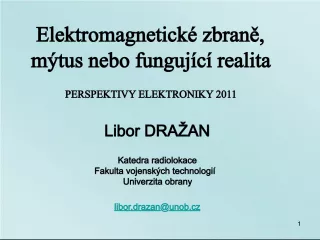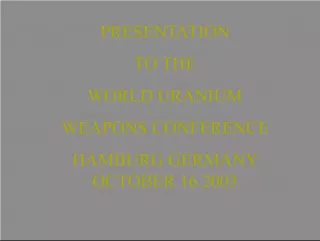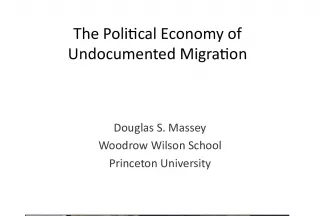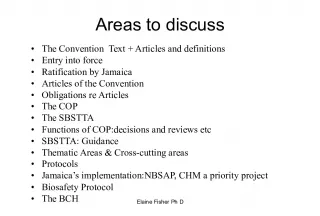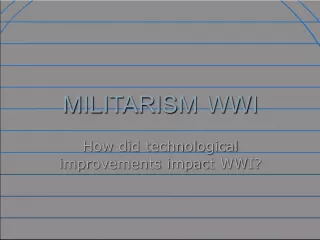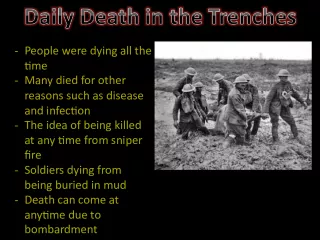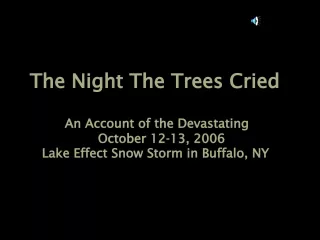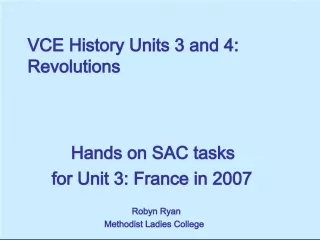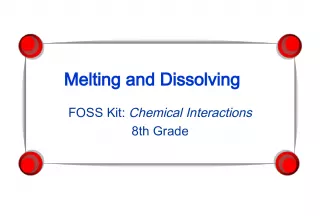The Threat of Biological Weapons Falling into Wrong Hands
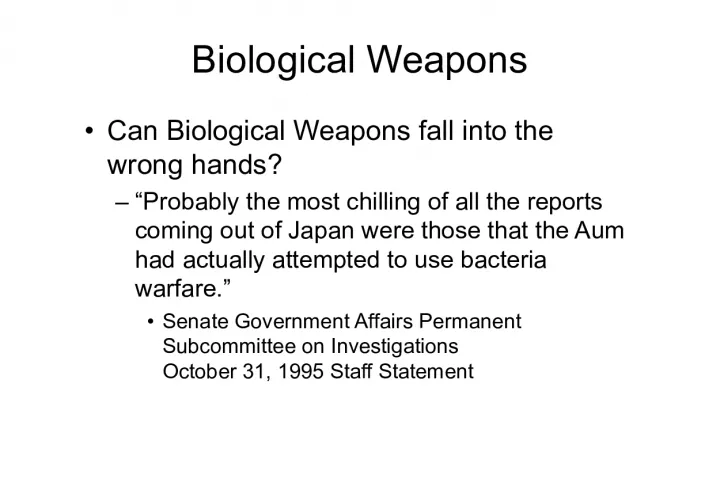

This article explores the dangers associated with the misuse of biological weapons and the potential consequences of them falling into the wrong hands. Using recent incidents in Japan as a backdrop, it highlights the urgent need for strict regulations and preventive measures.
- Uploaded on | 0 Views
-
 benzy
benzy
About The Threat of Biological Weapons Falling into Wrong Hands
PowerPoint presentation about 'The Threat of Biological Weapons Falling into Wrong Hands'. This presentation describes the topic on This article explores the dangers associated with the misuse of biological weapons and the potential consequences of them falling into the wrong hands. Using recent incidents in Japan as a backdrop, it highlights the urgent need for strict regulations and preventive measures.. The key topics included in this slideshow are biological weapons, security risks, potential threats, Japan incidents, preventive measures,. Download this presentation absolutely free.
Presentation Transcript
1. Biological Weapons Can Biological Weapons fall into the wrong hands? Probably the most chilling of all the reports coming out of Japan were those that the Aum had actually attempted to use bacteria warfare. Senate Government Affairs Permanent Subcommittee on Investigations October 31, 1995 Staff Statement
2. Definition BW* Biological weapons are made from living organisms, or the toxins generated by living organisms that cause disease in humans, animals, or plants. These agents can be bacteria, virus, mycoplasmas or toxins. The agent may be lethal or incapacitating. Biological agents can be used as proximity antipersonnel agents against humans, or may also be employed as antianimal, antiplant and antimaterial agents. Antianimal agents are effective against domestic livestock. Antiplant agents are live organisms that cause disease or damage to crops and antimaterial agents cause damage or breakdown of materials such as rubber. *M. Prelas and M. Peck, Nonproliferation Issues for Weapons of Mass Destruction, Marcel Dekker; (January 2005), ISBN: 0824753399
3. Aum Shinrikyo 's CBW Program: Gas, Bugs, Drugs and Thugs Aum dispersed anthrax bacilli at their Tokyo headquarters in 1993 There are reports that Aum may have used anthrax bacilli elsewhere
4. Case Study West Nile Virus September 2, 1999 CDC confirmed that 3 residents of Queens, NY had contracted a mosquito born virus. Initial fears of bioterrorism
9. Case Study Foot and Mouth Disease Initial outbreak February 19, 2001 Panic Spreads Globally As of September 3, 2001 three new cases of foot and mouth disease confirmed in UK
10. A Short History of Biological Warfare Biological weapons have a long history. In their earliest manifestation, the water or food supplies of an opposing army or of a city under siege were fouled. The Assyrians around 600 BC poisoned the wells of their enemies with a parasitic fungus called rye ergot that caused the disease ergotism [i] . This disease was incapacitating leaving towns defenseless when the Assyrians invaded. [i] Bioterror through time, Jason Robey, Discovery Channel Series, Spotlight, http://dsc.discovery.com/anthology/spotlight/bioterror/history/history.html, (last accessed 2/27/03).
11. Plague as a Siege Weapon History has also recorded the use of plague infected corpses that were catapulted into cities under siege or into the ranks of an opposing army. 1346 At Kaffa (now Feodossia) the Tartars threw the bodies of plague victims over the walls. Eventually led to the plague pandemic in Europe known as the black death. About 25% of the European population died. 1710 During the war between Russia and Sweden, Russian troops used the body of plague victims to expose Swedish soldiers.
12. Smallpox as a BW 1776 During the French and Indian war, Sir Jeffery Amherst provided small pox infested blankets to Indians loyal to France. He was able to take Ft. Carlillon and renamed it Ft. Ticonderoga. George Washington was concerned about the smallpox threat and ordered that the Continental Army be vaccinated in 1777. Vaccination against smallpox in 1777 used a weak strain of the disease [i] . There was a smallpox outbreak in the colonies soon after but no one under Washingtons command caught it. [i] A medical battalion, Bernadine Healy, M.D., U.S. News and World Report, February 10, 2003 p 76
13. Biological Weapons in US History Biological weapons were used at least twice during the American Civil war [i] . During the Confederate retreat from Vicksburg, General Johnson contaminated wells with the carcasses of dead animals to slow down General Shermans Union troops. A confederate sympathizer who would later become the governor of Kentucky, Dr. Luke Blackburn, infected clothing with smallpox and yellow fever and then sold the goods to Union troops. In response to these acts, the Union specifically banned the use of poison and infectious disease by its troops. [i] A medical battalion, Bernadine Healy, M.D., U.S. News and World Report, February 10, 2003 p 76
14. Beginning of 20 th Century During World War I, German scientists had isolated some disease-causing microorganisms. A German sympathizer, Dr. Anton Dilger who lived in the Washington, D.C. area, grew Bacillus anthracis (the cause of anthrax) and Pseudomonas mallei (the cause of glanders) from cultures supplied by the Imperial German Government [i] . German agents posing as dockworkers in Baltimore obtained cultures of these bioagents from Dilger. The cultures were used to infect about 3,000 head of livestock which were being shipped to Allied troops in Europe. In addition, several hundred allied troops were also infected. [i] A medical battalion, Bernadine Healy, M.D., U.S. News and World Report, February 10, 2003 p 76
15. 20th century science & BW The Japanese began a program in 1937 to weaponize biological agents. The operation was housed in a complex in Manchuria called Unit 731. The scientists under the direction of Dr. Ishii Shiro in Unit 731 tested and weaponized plague, cholera and anthrax under the guise of water purification research. By 1940, Japan began testing some of their creations on the civilian population of China, Chinese soldiers and prisoners of war. In one such experiment plague-infested rat fleas were dropped from the air causing an epidemic with 10,000 deaths. Over the course of World War II as many as 200,000 people died because of the experiments performed by Unit 731 scientists.
16. 1943-69 US biological weapons program operated. 1975-83 The countries of Laos and Kampuchea were attacked by panes and helicopters delivering aerosols of several colors (yellow, green and white). Shortly after, people and animals became ill. Somewhat later, similar clouds of aerosols were observed in Afghanistan. Speculation is that this material may have been the tichothecenes mycotoxin. 1978 A Bulgarian exile, Georgi Markov, was stabbed in the leg with an umbrella point while in London. He died three days later.
17. The Assassin
18. 1979 In late April about 66 people died of pulmonary anthrax infections in the city of Sverdlovsk. The anthrax was accidentally released from a biological weapons facility nearby.
19. Map of Sverdlovsk Accident
20. Recent Events In Dalles, Oregon, from September 9 through 18 and from September 19 through October 10, 1984 [i] . The salad bars of four area restaurants were contaminated with salmonella typhmurium. Seven hundred and fifty one cases of salmonella gastroenteritis ensued. This outbreak of salmonellosis was caused by intentional contamination of restaurant food bars by members of the Bhagwan Shree Rajneesh commune who were attempting to incapacitate voters in a local election. Weapons grade anthrax were placed in envelopes and mailed to Florida, Washington, DC and New York. On October 2, 2001, Robert Stevens a photo editor at American Media Inc., checked into a Florida hospital. He died on October 5 from inhalation anthrax [ii] . On October 15, 2001, Ernesto Blanco, another in Florida American Media employee was also diagnosed with inhalation anthrax, a rare disease in the US. [i] Torok TJ, Tauxe RV, Wise RP, Livengood JR, Sokolow R, Mauvais S, Birkness KA, Skeels MR, Horan JM, Foster, A large community outbreak of Salmonellosis caused by intentional contamination of restaurant salad bars, LR., JAMA 1997 Aug 6;278(5):389-95 [ii] Officials: Florida anthrax case 'isolated', CNN, October 5, 2001, http://www.cnn.com/2001/HEALTH/10/05/florida.anthrax/, (last accessed 3/6/03)
21. Transmission Serratia Marscens (SM), is a harmless bacterium that is easily tracked due to its bright red color. Instructors in medical school used it to demonstrate the transmission mechanisms for infectious diseases. An instructor would put the organism in his or her mouth and then lecture. The organism would be captured on plates covered with nutrients around the room. The next day, the dispersion of SM around the room could be seen on the plates by its characteristic color.
22. Post-Weaponization Historical View In 1949 as a test, teams with sprayers introduced SM into the intake vents of the Pentagons air conditioning system. April of 1950 the USS Coral Sea and USS K. D. Bailey sprayed both Serratia Marscens (SM) and Bacillus Globigii (BG) into the wind blowing towards Norfolk, Hampton, and Newport News, Virginia. The tests demonstrated that U.S. costal cities could be threatened by a biological attack.
23. In September 1950, about two miles off the cost of San Francisco, U.S. Navy ships sprayed SM, BG and a cloud of fluorescent particles, along a dissemination line of 3 miles length. The material was collected at monitoring stations around the bay area. The Fluorescent Particles (FP) deposited throughout the citys streets and sidewalks and at night, under ultraviolet light glowed like stars. Traces of SM, BG and FP were found as far away as twenty-three miles. If the organism had been anthrax, it would have produced lethal doses in an area of about 50 square miles.
25. A series of tests were designed to show that a large-scale attack with biological weapons was feasible. On December 2, 1957, an AC-119 sprayed an area from South Dakota to International Falls, Minnesota, with fluorescent particles while a cold air front was moving down from Canada. Particles were detected 1200 miles away in New York State.
26. A plane flying from Toledo, Ohio, to Abilene, Texas, and a second plane flying from Detroit, Michigan, to Goodland, Kansas, sprayed about forty pounds of FP per minute. Sampling stations on the ground proved that large areas of the country could be attacked with biological weapons. A jet aircraft equipped with a BG sprayer flew a predetermined pattern near Victoria, Texas. The BG was found as Far East as the Florida Keys.
27. Travelers at the Greyhound Bus terminal in Washington D. C., and the Washington National Airport, Washington D. C., were subjected to BG in October 1965. Scientists walked through the bus terminal and the airport and sprayed the bacterium into the air without being detected. Aerosol traps were placed at strategic points to capture the bacterium as it moved through the air. A light bulb filled with BG was dropped on the tracks in the New York City subway in June 1966. BG spread throughout the subway system within 20 minutes. Monitoring of the BG demonstrated that even this small amount of material, had it been anthrax, could have killed thousands of people.
28. Conclusions of US Tests Overall, more than 200 tests were performed to demonstrate the potential of biological weapons. This research culminated between 1964 and 1968 with a series of tests at facilities in the Pacific including the well-known project SHADY GROVE. The tests demonstrated that a single weapon was able to cover 2400 square kilometers with 30% casualties [3].
29. Relative Effects of NBC Weapons Parameter Nuclear Chemical Biological sq miles 75-100 100 34,000 _________________________________________________ Morbidity 98% 30% 35-75 _________________________________________________ Residual 6 months 3-36 hrs Epidemic 1000 sq. m. Spreads all over ________________________________________________ Time seconds 30 secs few to 14 days ________________________________________________ Prop. Damage 30 sq miles undamaged undamaged
30. Infectious agents most effective when spread in an aerosol form Disease Transmit Man to Man Infective Dose (Aerosol) Inhalation anthrax No 8,000-50,000 spores Brucellosis No 10 -100 organisms Cholera Rare 10-500 organisms Glanders Low Assumed low Pneumonic Plague High 100-500 organisms Tularemia No 10-50 organisms Q Fever Rare 1-10 organisms Smallpox High Assumed low (10-100 organisms) Venezuelan Equine Encephalitis Low 10-100 organisms Viral Hemorrhagic Fevers Moderate 1-10 organisms Botulism No 0.001 mg/kg is LD 50 for type A Staph Enterotoxin B No 0.03 mg/person incapacitation Ricin No 3-5 mg/kg is LD 50 in mice T-2 Mycotoxins No Moderate
31. Lethal Dose Amount of Agent (in Kilograms) to produce 50% Casualties on 1 Square Kilometer Target Type Agent Kilograms Biological Anthrax 0.09 Biological SEB 119 Biological Botulinum 345 Biological Ricin 1,727 Chemical VX 5,000 Chemical Mustard 10,000 Nuclear Fission 13,333
33. Aerosol Infectivity Relationship 18-20 15-18 7-12 4-6 (bronchloles) 1-3 (alveoll) Particle size micrometers Less More Infection Severity Ideal aerosols would have a homogeneous population of 2-3 micron particles Maximum infection of the human respiratory system are with particles between 1-3 microns size
34. Primary Aerosol Particles with 1 to 5 micrometer diameter are called the primary aerosol The primary aerosol behaves like a gas A person becomes infected because he or she is breathing at a rate of 10 to 20 liters of air a minute.
35. Lethality of Bioagents Throughout history, the balance between infectious disease and humankind has been tenuous. Disease had killed more humans than war. World War II was the first major conflict where more combatants died directly by inflicted wounds than from disease or infection. One of humankinds greatest achievements during the 20th century was medical science advancements shifting the delicate balance between microbe and man in favor of humankind. From: Nonproliferation Issues for Weapons of Mass Destruction, Mark Prelas and Michael Peck, Marcel Dekker, ISBN: 0824753399, To be published January 2005.
36. The Human Biohazzard Highly infectious bioagents could be delivered by humans. If a terrorist were to be exposed to smallpox, it would be feasible for that terrorist to infect a planeload of people on a long haul flight while in the infectious stages of the disease. Given the nature of travel across boarders today as compared to 1972, it would be very difficult to implement quarantine along with vaccination as a means of containment. There is a potential of spreading smallpox worldwide. A suicide bomber could infect himself or herself with blood born agents such as HIV or Ebola and spread the infection by detonating himself or herself in a crowded area.
37. The Human Experience In many ways biological weapons are understandable. We have shared human experiences in dealing with colds, flues and infection. The basics of hygiene are universally taught to children to help them avoid catching disease. Life experience and familiarity tends to mitigate our fear of disease because we have to live with it. In contrast to nuclear threats, the problem is that we become complacent and we do not have a healthy fear of biological agents. It is very common for us to go to work or school with the cold or flu fully recognizing that we will not take precautions in the workplace or the classroom to protect others or ourselves. A cough or sneeze deposits a biological aerosol on surfaces that others touch such as desktops and doorknobs. People inevitably transmit biological martial and spread the disease to others who touch the desktops or doorknobs and then touch their mouth or eyes. Habits are hard to break, but in order to minimize infection routes, frequent washing of hands and learning not to touch the mouth and eyes are critical. Flues and colds spread through communities and homes rapidly. But the risk of dying from a cold or flu is small so we do not think twice about the disease. From: Nonproliferation Issues for Weapons of Mass Destruction, Mark Prelas and Michael Peck, Marcel Dekker, ISBN: 0824753399, To be published January 2005.
38. Complacency What would be our reaction if the infection was SARS? SARS, with a 30% mortality rate, is one of several infectious diseases that have the potential to spread rapidly. The World Health Organization keeps a close watch on natural SARS outbreaks and works quickly to intervene when discovered. What would happen if SARS were being spread on purpose by a determined group? If multiple people were purposely infected with SARS and were sent to public places to spread the disease, what could be done to limit its spread? Our complacency to biological agents would work against us.
39. A simple virus could be deadly Biological weapons do not have to be sophisticated to be effective. The numbers are staggering. For example, a highly infectious agent with 2.5% mortality rate if optimally spread around the world could infect a significant portion of the worlds population and could kill over 100 million people: The 1918 influenza pandemic, for example, killed 20 to 40 million people when the worlds population was much smaller [i] , [ii] . However, as described in chapter 4, biological weapons can be even more sophisticated and more lethal. As biotechnology flourishes, the means to make agents more sophisticated and lethal will also flourish. Biotechnology has developed a host of tools that many would have thought impossible 50 years ago such as recombinant genetic engineering. [i] The Influenza Pandemic of 1918, Molly Billings, June, 1997, Stanford University, http://www.stanford.edu/group/virus/uda/, (last accessed 5.25.04). [ii] Influenza 1918, PBS, http://www.pbs.org/wgbh/amex/influenza/, (last accessed 5/25/04). From: Nonproliferation Issues for Weapons of Mass Destruction, Mark Prelas and Michael Peck, Marcel Dekker, ISBN: 0824753399, To be published January 2005.
40. Can States and Terrorist Groups Cooperate Yes!! See for example the Taliban and Al Qaeda Cooperation of this type is a potential military tool China Ponders New Rules of `Unrestricted War' The Washington Post ; Washington; Aug 8, 1999; John Pomfret;
41. Cost of Bioweapons There are economic barriers that play a role into how a weapon technology migrates. The United Nations did a 1969 study on the cost of causing 50% casualties over a one square kilometer area using various weapon systems [i] . Biological weapons were by far the least expensive weapon: Conventional weapon ~ $6,000 Nuclear weapon ~ $2,400 Chemical weapon (sarin gas) ~ $1,800 Biological weapon (anthrax) ~ $3 [i] Gordon Christensen, Biological Terrorism, Lecture in Science and Technology of Terrorisms and Counterterrorism, Fall 2000, http://prelas.nuclear.missouri.edu/NE401/l24.zip, (last accessed 4/28/04).
42. The Future of Bio terrorism--Designer Bugs: Biotechnologies may eventually be used to develop manmade bioagents Scientists Construct First Synthetic Poliovirus July 11, 2002, http://www.reuters.com/news_article.jhtml?type=search&StoryID=1192468 GM goat spins web based future, Aug. 21, 2000 Using techniques similar to those used to produce Dolly the sheep, scientists at Nexia Biotechnologies in Quebec have bred goats with spider genes. http://news.bbc.co.uk/hi/english/sci/tech/newsid_889000/889951.stm
43. Risks Knowledge is a double-edged sword in that any good that comes from a technology is equally balanced by the potential harm that it can cause. Biotechnology is an excellent example. This technology will dominate the 21st century with the potential to solve the plagues of the prior centuries (e.g., disease, pestilence, hunger and poverty). People once wrongly believed that nuclear weapons could destroy mankind. Unlike technologies of the past, which did not possess the capability, biotechnology does have the capability of destroying mankind. From: Nonproliferation Issues for Weapons of Mass Destruction, Mark Prelas and Michael Peck, Marcel Dekker, ISBN: 0824753399, To be published January 2005.
44. Questions? U.S. Marines gather around cages of pigeons at a military base in northern Kuwait near the border with Iraq on March 14. Marines being deployed to Iraq will take along pigeons to warn them of chemical or biological attack. March 14, 2003
45. Lethal Vs. Incapacitating Agents Lethal Incapacitating Bacillus anthracis VEE Virus Botulinum Toxin Q Fever Francisella tularensis Staph Enterotoxin B (SEB) Yersinia pestis Smallpox Ricin Toxin
46. *M. Prelas and M. Peck, Nonproliferation Issues for Weapons of Mass Destruction, Marcel Dekker; (January 2005), ISBN: 0824753399 Table 2.1 Biological Weapons Programs Around the World
47. Criteria For Biological Agents Easily and rapidly produced Can be made into 1 to 5 micrometer aerosol Can be concentrated and dried Are environmentally stable Heat, air, humidity, UV Can be weaponized
48. Principle Agents Used in Weapons Botulinim Toxin Lethal Shellfish Toxin Lethal Anthrax Lethal Tularemia Incapacitating VEE Incapacitating Q fever Incapacitating Enterotoxin Incapacitating Undulant fever Incapacitating Rice blast Plant Pathogen Wheat rust Plant Pathogen
49. Anthrax Anthrax is stable to air, UV, and temperature. It forms spores and they can last for years. Anthrax can be introduced by ingestion (GI), inhaled, and through a cut in the skin. The most deadly is inhalation. Spores go the regional lymph nodes Two lethal toxins are produced. Toxins kill cells
50. Inhalation Anthrax Need about 10,000 spores to infect. Starts out like a flu Dry cough and you do not feel well Initial improvement followed by an abrupt onset of respiratory distress and shock. Note: If you are not treated before the abrupt onset of respiratory distress, then no treatment will work.
51. Anthrax Pathway
52. Tularemia It takes 10 to 50 organisms to infect. It spreads by inhalation, ingestion or absorption. Mortality rates of 20 to 30%. 2 to 10 days after inhalation the abrupt onset of high fever, nonproductive cough, and pneumonia.
53. Tularemia Infection Mechanisms
54. Plague Plague is caused by the bacterium Yersinia pestis. Cause of 3 devastating pandemics Black Death in 14 th century Europe China 1890 Disease carried by steamships throughout the world Epidemic reached US in 1900 San Francisco Plague is now endemic in the US
55. Endemic Counties in US
56. Methods of Transmission
57. Symptoms of Inhalational Plague Two to three days incubation High fever, cough with bloody sputum Antibiotics must be started within 24 hours of symptoms to impact survival.
58. Plague Infection Mechanisms
59. Q Fever Highly infectious rickettsia type organism. Resistant to heat and drying Highly infectious by aerosol route High risk of infection by spore like form An incapacitating biological warfare agent
60. Q Fever Symptoms Incubation period 10 to 40 days Fluctuating fever 103 to 104 o F Night sweats, headaches Self limiting disease 5 to 13 days
61. Q Fever Infection Mechanisms
62. Viral Equine Encephalitis (VEE) Virussensitive to heat and disinfectants Can be aerosolized as a wet or dry agent Highly infectious- 100% will develop symptoms A Neurotropic virus- attacks the brain Primarily an incapacitating agent
63. VEE Infection Mechanisms
64. Smallpox DNA virus Spread by aerosols Very stable as biological aerosol Resistant to common disinfectants Highly contagious Infectious until scabs are healed over A similar disease is Monkey Pox
65. Smallpox Symptoms Incubation period of 5 to 10 days High fever, vomiting, headache and stiffness (duration 2 to 4 days) In about 7 days small spots will begin to develop forming a rash around the face. The rash will spread and the spots will form painful blisters. The blisters will form scabs which will last for several weeks and fall off.
66. Black and Red Pox The black and red pox are more sever and can cause death in 3 to 4 days
67. Small Pox and Monkey Pox Infection Mechanisms
68. Viral Hemorrhagic Fevers (VHF) RNA virus Human infection by insect bites or by contact with blood and body fluids. Not very stable
69. VHF Symptoms Fever Shock Mucous membrane hemorrhage Respiratory and central nervous system problems Disease severity and survival depends upon host factors, virus strains and other immunologic factors Mortality varies between 50 and 80%
70. VHF
71. Marburg
72. Ebola
73. Ebola Case Study
74. VHF Infection Mechanisms
75. Comparison of Onset of Symptoms
76. Domestic Terrorism Consider an attack on a large skyscraper Volume of structure is 1x10 10 liters Floor Area = 2.72 km 2
77. Amount of Material Required to Attack the Skyscraper Agent LD 50 kg/km 2 Kg for Attack Anthrax 0.06 0.1632 SEB 119 324 Botulinum 345 938 Ricin 1,727 4,698 VX 5,000 13,600 Mustard 10,000 27,200
78. Production Methods Fermentation Chicken eggs (virus) Tissue Live Animals
79. Fermentation
80. Fermentation is as common as brewing beer
81. First you provide the organism food for growth
82. You add the organism and stir
83. You provide the right conditions for growth and then wait
84. Production of Lethal Botulinum Toxin Grow toxin in garbage cans
85. Production of Crude Liquid Tularemia Grow tularensis on blood agar plate: obtain confluent growth. Each plate yields a minimum of 1x10 10 cells
86. Viral Production Process
87. The USSR proved that large scale production of Agents is possible Ken Alibeck, Biohazzard 1998 We were among the 140 signatories of the (1972 biological weapons) convention, pledging not to develop, produce, stockpile or otherwise acquire or retain biological agents for offensive military purposes. At the same time, through our covert program, we stockpiled hundreds of tons of anthrax and dozens of tons of plague and smallpox near Moscow and other Russian cities for use against the United States and its Western allies.
88. What makes a good biological weapon 4 considerations The agent properties The munitions Meteorological conditions Method of dissemination Line source or point source Physics of aerosols examined Copperhead test in the arctic.
89. Biological Weapons Programs US program began in 1941 when Secretary of War Henry L. Stimson requested a National Academy of Science to review the feasibility of BW. Intelligence indicated that Germany and Japan were involved in BW research
90. 1942: NAS committee concluded that BW was feasible. George W. Merck formed the War Reserve Service. Camp Detrick in Fredrick MD was chosen as the primary site. It became operational in 1943 1944: Dugway proving grounds in Utah was established as a test center. Production plant was built in Terre Haute IN. 1947-49 small scale testing of Bacillus Globigii (BG) and Serratia Marscens (SM) were performed at Camp Detrick.
91. 1950: BW program was extended due to Korean War 1951: An anticrop bomb was developed and placed into production. 1953: Camp Detrick was expanded 1954 Pine Bluff AR facility operational 1954 tularemia production at PBA facility 1955 Marshal Zhukov states that CW and BW would be used by the USSR in future wars
92. 1959-69 The military services submitted requirements for BW munitions including artillery, missiles, drones and other weapons 1962 Desert test center (DTC) established at Ft. Douglas, Salt Lake City. 1964-66 Virus and Rickettsiae production plants built at PBA 1969 President Nixon renounces the use of biological weapons 1970-72 All BW stock destroyed 1975 President Ford signs BW convention
93. Munitions
94. Vocabulary Dispersal Dispensing and dispersing a submunitions payload from a primary unit to maximize the spread of the BW delivery system. Dissemination Release or discharge of BW agent from a munitions or submunitions by pressurized gas or an explosive to form an aerosol.
95. Problems in BW design Agents such as anthrax, botulinum, plague are in both dry and slurry form Live agents are sensitive to temperature, wind, humidity, shock, etc. Must form a fine aerosol Aerosol is invisible and difficult to detect
96. Spanish Munitions sold internationally
97. Submunitions
98. Honest John Warhead
99. Russian Self Dispersing Warhead
100. Linear Sprayer
101. Delivery Capability of Groups and Individuals High quality anthrax material was sent by mail. Other bioagents in aerosol form could be delivered in this way. High quality anthrax material Can be spread in closed environments by breaking container like 1966 NY subway test. Can be delivered by dry sprayer in open Can be dropped by crop duster
102. Russian Chimera Virus Ken Alibek, Biohazzards 1998 We believe we can create a chimera virus, (quote from Lev Sandakchiev to Dr. Alibek) A chimera is an imaginary monster with the head of a lion, the body of a goat, and a serpents tail. Biologists use the word to describe an organ composed of tissues of diverse genetic material.
103. In 1997, the same team (Sergei Netyosovs group) reported in the Russian publication Questions in Virology that they had successfully inserted a gene for Ebola into the Genome of vacciniaBut we had always intended vaccinia to be our surrogate for further smallpox weapons researchOne of our goals had been to study the feasibility of a smallpox-Ebola weapon. Ken Alibek, Biohazzard, 1998
104. Aum Shinrikyo had tried nine times between 1990 and 1995 to spread botulinum toxin and anthrax in the streets of Tokyo and Yokohama. Seiichi Endotestified that their delivery methods spraying the agents from rooftop or from the back of a van had proven faulty, and their strains were not sufficiently virulent. But it is not difficult to find better strains. Ken Alibek, Biohazzard, 1998
105. I was told by American biowarfare experts that Iraq obtained some of its most lethal strains of anthrax from the American Type Culture Collection in Rockville, MDFor thirty five dollars they also picked up strains of tularemia and VEE once targeted for weaponization at Ft. DetrickSix weeks after the Aum Shinrikyo attack, Larry Harris, a member of white supremacist group in Ohio, ordered three vials of plague from the American Type Culture Collection catalog. Ken Alibek, Biohazzard, 1998
106. True Strategic Economic Warfare Objectives Disrupt food supplies Deny trade
107. World Plants 250,000 plant varieties 80,000 edible 75% of worlds diet is based on 8 crops 49% of world diet is based on rice, corn and wheat
108. Food supplies are vulnerable In the US most state raise less than 30% of the crops that feed their populations Cities typically have a five day food supply In the US the food you eat on average comes from over 1300 miles away
109. Potential Agriculture Biological Weapons The US has looked at 2000 potential pathogens. Of those 551 could be potential threats to our agricultural industry. Rice blast, late blight of potato, stem rust of wheat, stem rust of rye, southern corn leaf blight, citrus canker, etc. An agricultural attack would not be detected for days to weeks.
110. Trends in agriculture encourages BW terrorism US farms are more concentrated than ever There is decreasing genetic diversity There is a consolidation of support industries We are becoming more urban Agriculture is becoming more international
111. Method of Attacking plants and animals Information based A small number of knowledgeable people Minor resource requirement
112. What would an attack look like? Plants Infected plant material or seed Items contaminated with agent Green house or garden Animal Few small vials Refrigeration Syringe and needle Guinea pigs, rabbits, or hamsters Isolation and personnel protection
113. Biological attack indicators We may not realize until too late that we have become the victims of a biological attack. It is not until days or weeks after such an attack has taken place after the first wave of deaths that we will most likely recognize its occurrence. Ken Alibek, Biohazzard, 1998
114. Human Imagination is the limit How can bioagents be used? The Human imagination is the limit.
